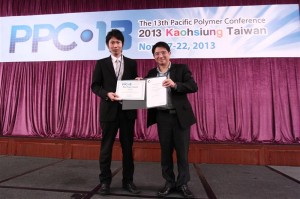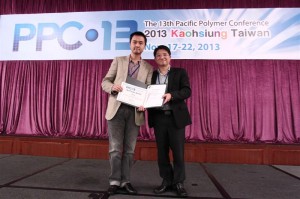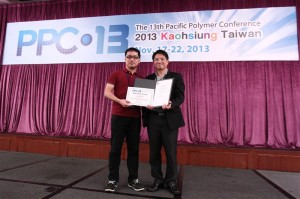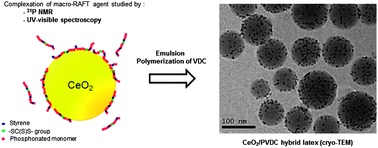Many congratulations to the winners at the 2013 International Symposium on Stimuli-Responsive Materials!
Chosen by an independent panel, the winners were: Akira Matsumoto (Institute of Biomaterials and Bioengineering at Tokyo Medical and Dental University) for the Journal of Materials Chemistry A, B & C poster prize, Justin Poelma for Polymer Chemistry and Saemi Oh for Soft Matter (University of California, Santa Barbara).
The symposium which focuses on the field of stimuli-responsive materials from academia, industry, and government took place in October (20 – 22) this year at the Hilton Sonoma Wine Country in Santa Rosa, CA and was co-sponsored by the Royal Society of Chemistry.

Akira Matsumoto receiving his poster prize for Journal of Materials Chemistry A, B, C

Justin Poelma receiving his prize for Polmer Chemistry

Saemi Oh winning the Soft Matter poster prize
Follow the latest journal news on Twitter @PolymChem or go to our Facebook page.



















